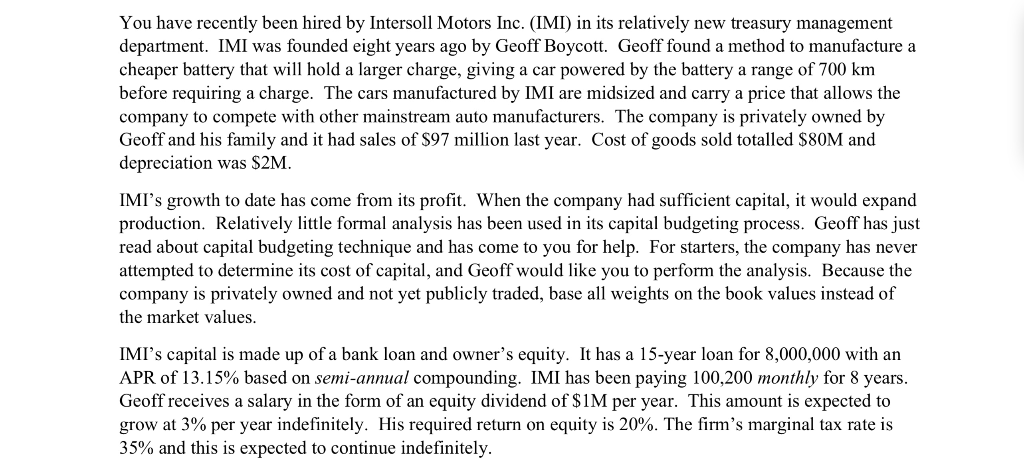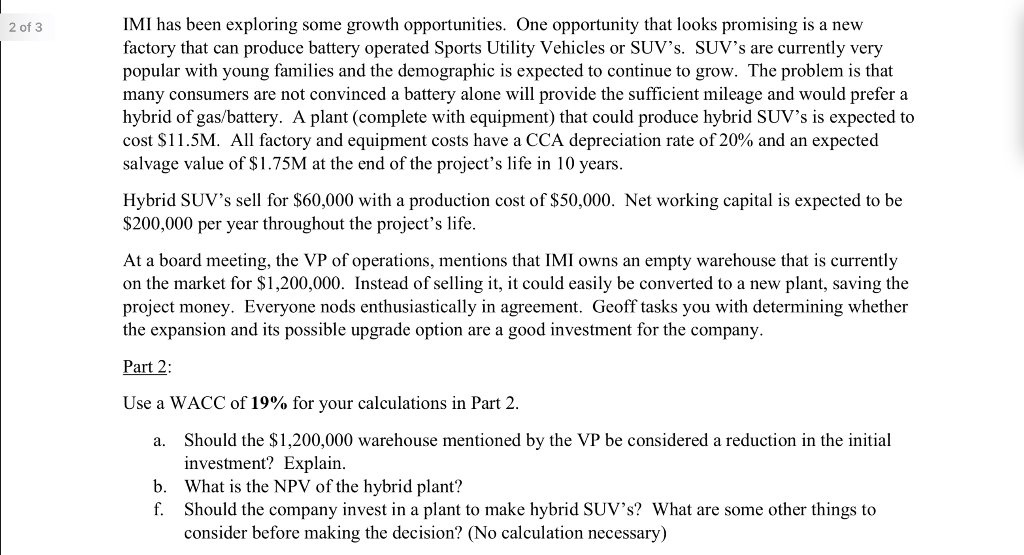Answered step by step
Verified Expert Solution
Question
1 Approved Answer
this is all the information given thanks You have recently been hired by Intersoll Motors Inc. (IMI) in its relatively new treasury management department. IMI
this is all the information given thanks 

Step by Step Solution
There are 3 Steps involved in it
Step: 1

Get Instant Access to Expert-Tailored Solutions
See step-by-step solutions with expert insights and AI powered tools for academic success
Step: 2

Step: 3

Ace Your Homework with AI
Get the answers you need in no time with our AI-driven, step-by-step assistance
Get Started


